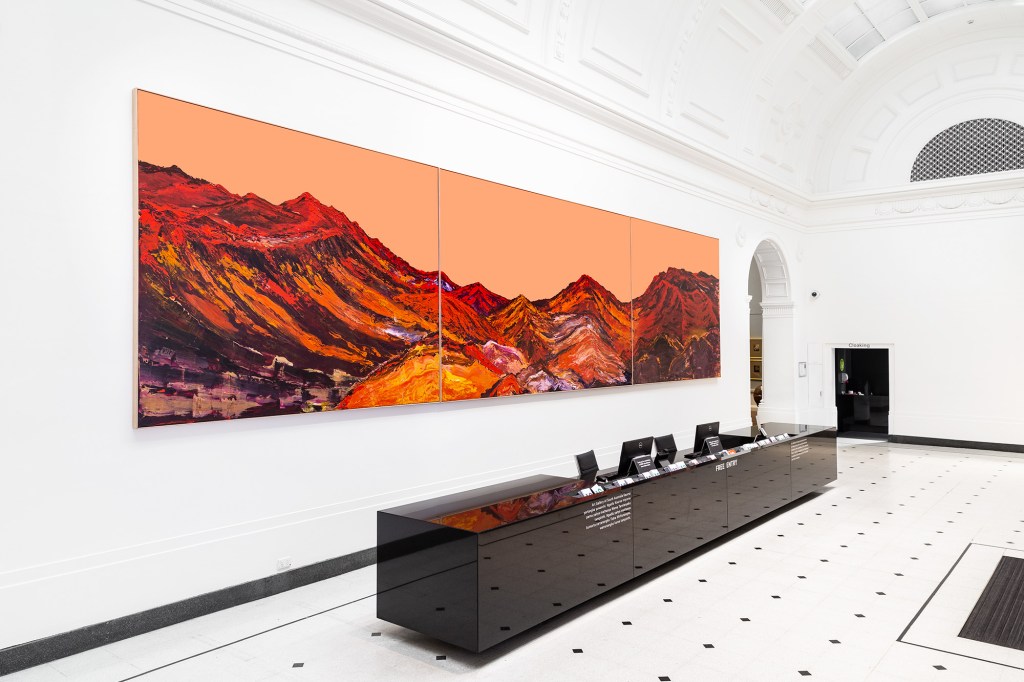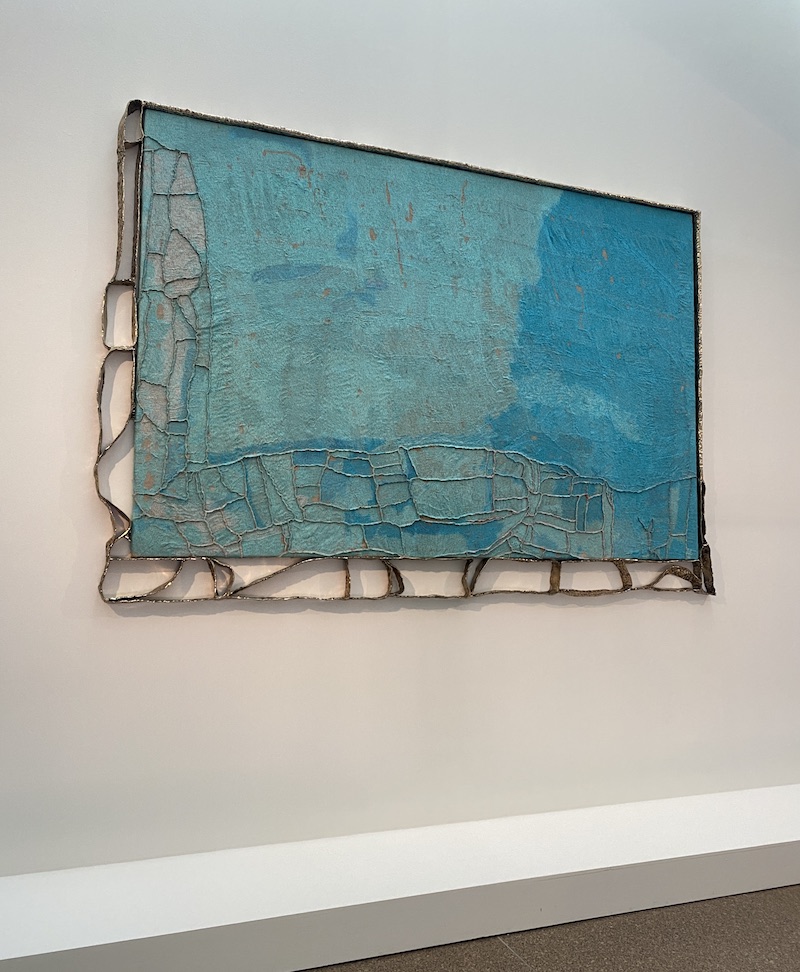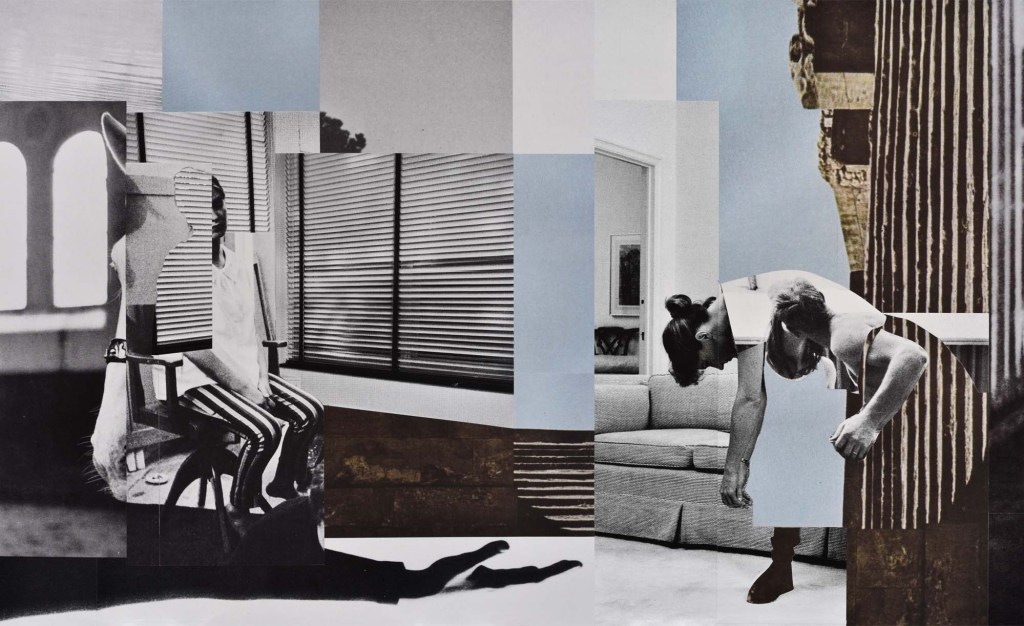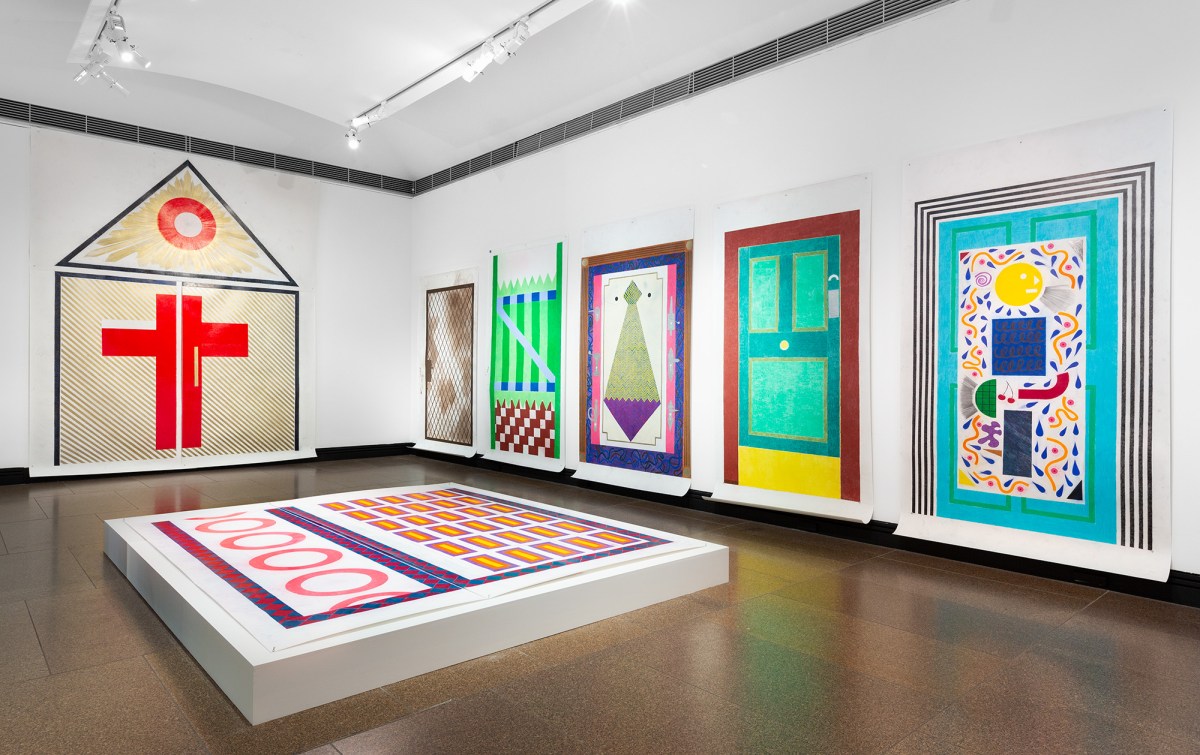When I spoke with curator José Da Silva last September, as the theme for his Adelaide Biennial of Australian Art – Inner Sanctum – was announced, he said of his forthcoming exhibition: ‘It will be an engagement that doesn’t demand of the viewer.’
Da Silva continued: ‘We put a huge expectation on artists today, to somehow have the solutions to the calamities that we face in our world. I’m not interested in asking artists to do that. I think what they can do is remind us about our own humanity. So this is a show that’s going to be quite personal and intimate and quiet.’
Walking through the exhibition five months later – a period when terrible new conflicts in the world have arisen, financial instability surrounds us and the “silent pandemic” continues to take lives – Da Silva’s exhibition offers slow time to heal and is a welcoming balm in urgent times.
It made me reflect on the trajectory of this exhibition of Australian art (the longest to be presented in Australia), and how Da Silva’s show offers a radical shift in tone and expectation.
It doesn’t feel “spectacular” and is void of the bowl-me-over installations that typically punctuate a biennial. It doesn’t appear to be taking the pulse of now, or be making grand statements, or have the bravado of openly searching for gongs and accolades. Put simply, Da Silva’s exhibition still manages to disarm us.
While it is slightly awkward to navigate – its sightlines are not polished in their connections, and at moments we find ourselves searching for more (there are just 24 artists presented) – you can’t help but feel that there is a stealth tactic going on here. Tenderness is a word that comes to mind. We have to consciously force ourselves to recalibrate to a different pace and place to view this exhibition.
It was a trigger for me to look back on the words of Mary Eagle, curator of the inaugural Adelaide Biennial in 1990, who stated: ‘Over the past 20 years the avant-garde has broken down. We are between times. Behind is the “modern” period… Ahead is whatever comes next.’
For this 18th edition, I have a similar sense of Da Silva’s exhibition clearing the slate.
And the artworks…
Da Silva serves up his exhibition in five parts: The Inland Sea; A Clearing, A Periphery; The River Path; A Quiet Spot; and The Writing of Love and Finding It. Some are concentrated in the major temporary exhibition spaces; others are expressions scattered across the Gallery, embedded within the collection and beyond.
Two points of entry offer a guide. In the Gallery’s Elder Wing, an expansive painting by First Nations artist George Cooley, My Painted Country 1 (2023) greets viewers with its red, earthy hues, which reveal a kaleidoscope of opal beneath the Earth’s surface. His paintings continue to pepper their way through the colonial wing.

At the other end of the Gallery is a painting of a young girl by Clara Adolphs, Dream (Green Dress), 2023, which is placed on a landing of the grand staircase descending to the lower galleries. There is something vacant and pensive about both Cooley’s and Adolphs’ paintings, and especially the latter’s portrait, which has a casual, honest, open quality. They seemingly settle us in the everyday, within time and place, and make no demand.
How these artworks play out in the space is perhaps the more interesting observation, and review, of Da Silva’s Biennial. Adolphs’ lone painting ushers our eye to an expansive suite of her works, which create what Da Silva describes as a ‘spine’ to the themed section, A Quiet Spot. Either side of it, he offers two more entry points. To move between them, the viewer is forced to retrace their steps and circle round. Is that a good thing or a bad thing? The answer is perhaps neither – but it is key to understanding this Biennial. Life is messy, and fumbling is the default.
I also feel that Da Silva is using these devices of disjuncture to break us out of our really toughened and honed practice of looking. I am not sure he is 100% successful in pulling it off, but I admire the commitment – and it is most certainly refreshing.
The highlights and intersections
Adolphs’ works are clearly a highlight of this edition of the Biennial, as are the incredible embroidered “paintings” of Teelah George on the upper level.

Her stitched sky maps hang off bronze fittings that not only add another material quality, but offer a metaphorical element as they add tension to, and claw and frame, these flowing ethereal fields of colour.
Jacobus Capone’s facing, two-screen video installation adds a much needed element of scale to this exhibition; its haunting soundtrack seemingly saturates the visitor with a menacing reminder of our climate emergency.
Worthy of mention also is a new work by Jessica Loughlin, which sits opposite the ecclesiastical stained glass windows which are part of the Gallery’s architecture. Working with natural light, Loughlin designed their armature with the late designer Khai Liew to riff off Japanese architectural forms in order to offer a kind of spiritual portal. It’s amazing to think this is a glass work at such scale.
In terms of the themed clusters, there are some unusual transitions; for example, from Clara Aldophs’ work one enters a compressed, rotunda-like chamber showing the video work of Tina Stefanou. As a transitional space, the sensitivity of this piece is lost, as people are forced to passage back and through the space while others try to watch.
It leads to a single painting and suite of drawings by the late Peter Maloney, then into a room shared by Vivienne Shark LeWitt and also Lillian O’Neil’s photographic collages (taking inspiration from her experiences of motherhood), which then lead to a dramatic installation by Jasmine Togo-Brisby looking at Pacific indentured labour.
While they all offer their own quiet space for contemplation, the thread of connection is a hard one for viewers to find.

The exhibition continues in the upper galleries corralling artists under the theme, The River Path. That fluid foundation is a little easier to grasp as notions of land and place connect with knowledge systems – be they ancestral, spiritual or First Nations.
A highlight within this grouping is the work of Nik Pantazopoulos, which sits aside as its own chapel for consideration (but where is the 12th station of the cross?).
A stunning ngaru (painted bark cloth tapestry) by Ruha Fifita runs the length of the space which speaks to heritage, community and slow time, and there is a pair of paintings by Marikit Santiago, whose work has become more finessed and confident. In an end room is a floating installation of hand-painted scrims and a video by Khaled Sabsabi which explores that third space where spiritual duality connects and opens up – always solid in his presentations.
Of note, the work of Kaye Brown is represented by just two borrowed barks and some older pieces from the South Australian Museum. Brown’s work was sadly lost in a fire while being trucked to Adelaide. Thankfully, they were documented and visitors can take a brochure that shares her story.
Performance elements and poetry complete this exhibition, which extend the experience for viewers over the period of the Biennial. Reiterating Da Silva’s words to ArtsHub, he said: ‘There’s no trickery to this rationale. It’s about the human condition, and about the way that artists are always there to show us our shared humanity.’
I think the trick to enjoying this exhibition is to keep it simple. Don’t ask too much of it – don’t overthink it. Now, more than ever, people are seeking places of refuge and sanctuary. Allow yourself to find it organically. And slow down.
2024 Adelaide Biennial: Inner Sanctum
Art Gallery of South Australia
Exhibition Season: 1 March – 2 June
Presented in association with the Adelaide Festival
Free
Artists: Clara Adolphs (NSW), James Barth (Qld), Christopher Bassi (Qld), Seth Birchall (NSW), Kaye Brown (NT), Jacobus Capone (WA), George Cooley (SA), Ali Cobby Eckermann (SA), Lawrence English (Qld), Ruha Fifita (Qld), Teelah George (Vic), Paul Knight (GER), Kate Llewellyn x Adelaide Chamber Singers (SA), Jessica Loughlin (SA), Peter Maloney (ACT), Jazz Money (NSW), Lillian O’Neil (Vic), Nik Pantazopoulos (Vic), Khaled Sabsabi (NSW), Marikit Santiago (NSW), Vivienne Shark LeWitt (Vic), Tina Stefanou (Vic), Heather B Swann (Tas), Jasmine Togo-Brisby (Qld).
The writer visited Adelaide as a guest of the Art Gallery of South Australia and Adelaide Festival.





